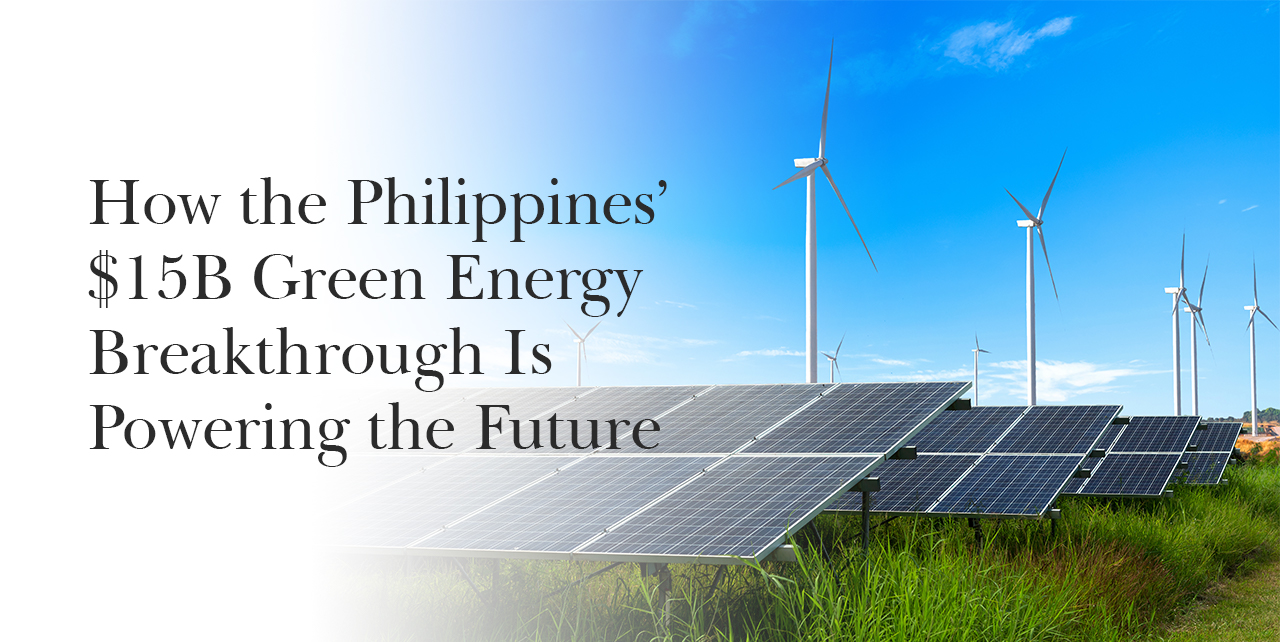The Philippines is making a bold leap towards a cleaner, more sustainable future with a $15 billion renewable energy partnership with Masdar, a leading renewable energy company based in the United Arab Emirates (UAE). This landmark deal signifies a major shift in the country’s energy landscape, aiming to expand solar, wind, and battery storage projects across the nation. As climate concerns intensify and energy demands grow, this initiative sets a new standard for green energy development in Southeast Asia.
A Strategic Partnership for Renewable Growth
On January 16, 2025, the government of the Philippines and Masdar signed an agreement to develop renewable energy infrastructure, reinforcing the country’s commitment to achieving a low-carbon economy. The collaboration focuses on projects that will increase the share of renewable energy in the country’s power mix, helping the Philippines meet its ambitious goal of 35% renewable energy by 2030 and 50% by 2040.
This partnership aligns with the Philippine government’s strategic energy plan, aiming to reduce dependency on fossil fuels and enhance energy security. The initiative will support the country’s Green Energy Auction Program (GEAP), which encourages private sector participation in renewable energy projects. This approach ensures efficient allocation of renewable energy capacity, fostering economic growth and sustainability.
Focus Areas: Solar, Wind, and Battery Storage
The $15 billion investment will be allocated to various renewable energy sources, including solar farms, wind power projects, and battery storage systems. These investments will significantly contribute to reducing greenhouse gas emissions and meeting growing electricity demands in urban and rural areas.
- Solar Energy Expansion
The Philippines enjoys abundant sunlight, making solar energy a key focus of this initiative. New solar farms will be developed nationwide, providing clean, cost-effective electricity and reducing reliance on traditional fossil fuels. - Wind Power Development
Coastal and high-altitude regions of the Philippines offer strong wind resources, making wind power a viable energy source. Investments in onshore and offshore wind farms will diversify the energy supply and increase renewable energy generation. - Battery Storage Innovation
One of the challenges of renewable energy is intermittency—the inconsistency of solar and wind energy production. The initiative includes advanced battery storage technology to ensure a stable power supply, even when the sun isn’t shining or the wind isn’t blowing.
Economic and Environmental Benefits
1. Job Creation and Economic Growth
This initiative is expected to generate thousands of jobs in the renewable energy sector, from infrastructure development and engineering to maintenance and innovation. By investing in green technologies, the Philippines will attract foreign and local investors, strengthening its position as a leader in renewable energy in Asia.
2. Reducing Carbon Emissions
The Philippines has been heavily dependent on coal and imported fossil fuels, leading to high carbon emissions. This transition to renewable energy will significantly cut carbon footprints, aligning with global climate commitments and improving air quality nationwide.
3. Energy Security and Independence
With a growing population and rising energy demand, the Philippines faces challenges in energy security. Investing in renewable sources will reduce reliance on imported fossil fuels, making the country more energy-independent and resilient to global fuel price fluctuations.
Challenges and the Road Ahead
While this initiative presents significant opportunities, there are challenges to address, including infrastructure development, regulatory frameworks, and community engagement. The success of the project will depend on government policies, seamless public-private cooperation, and technological advancements in renewable energy.
Government’s Role
The Philippine government must ensure efficient policy implementation, offering incentives for investors and fast-tracking approvals for renewable energy projects.
Public-Private Partnerships
Collaboration between government agencies, private enterprises, and local communities will be essential for the long-term success of the initiative.
Education and Awareness
To encourage public support, the government plans to launch nationwide awareness campaigns, including flyers, social media content, and community workshops, educating citizens on the benefits of renewable energy.
As the country moves forward with this historic renewable energy push, all eyes will be on how public policies, private investments, and community participation will shape the Philippines’ green energy transformation. One thing is clear: the future of energy in the Philippines is renewable.


